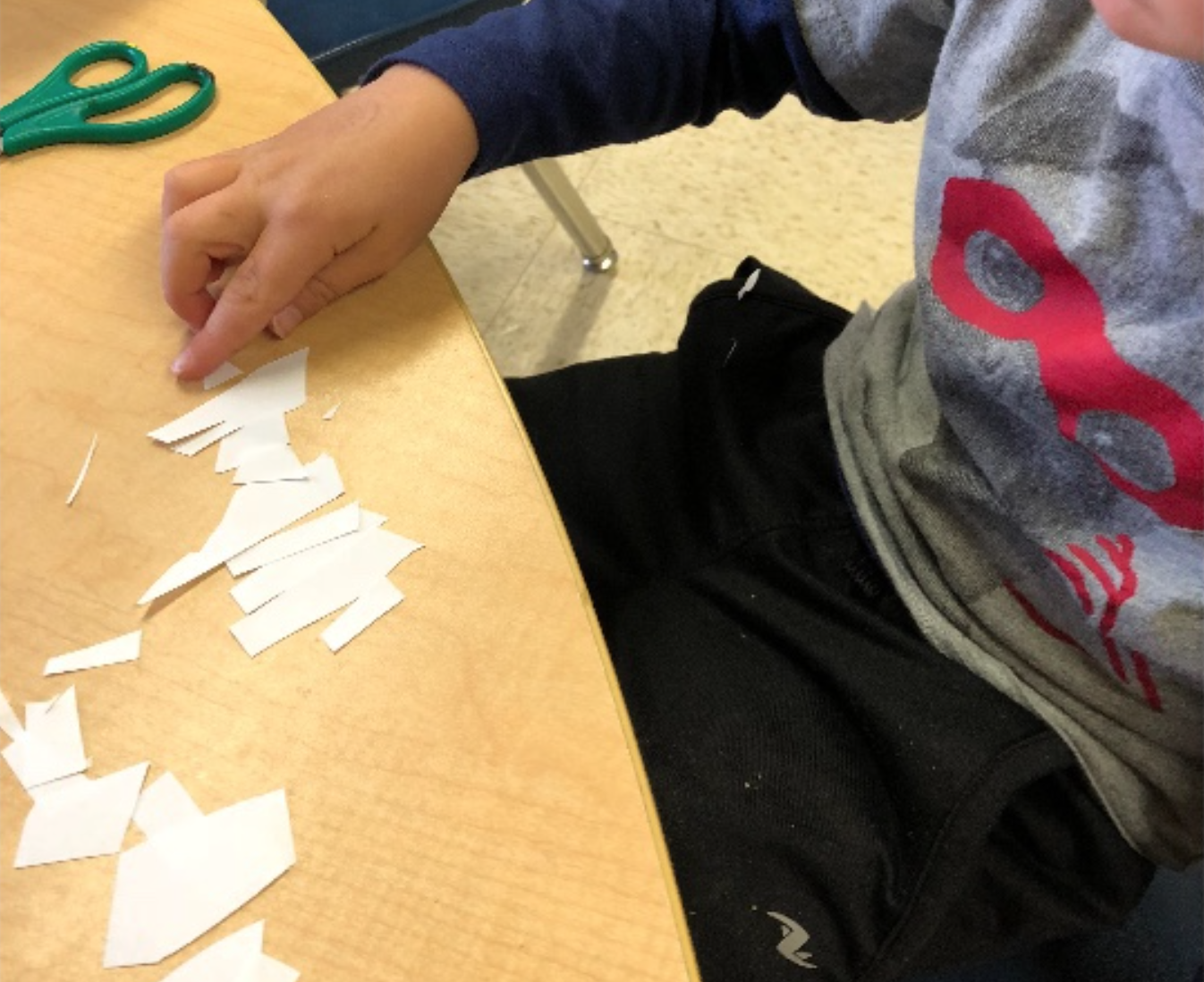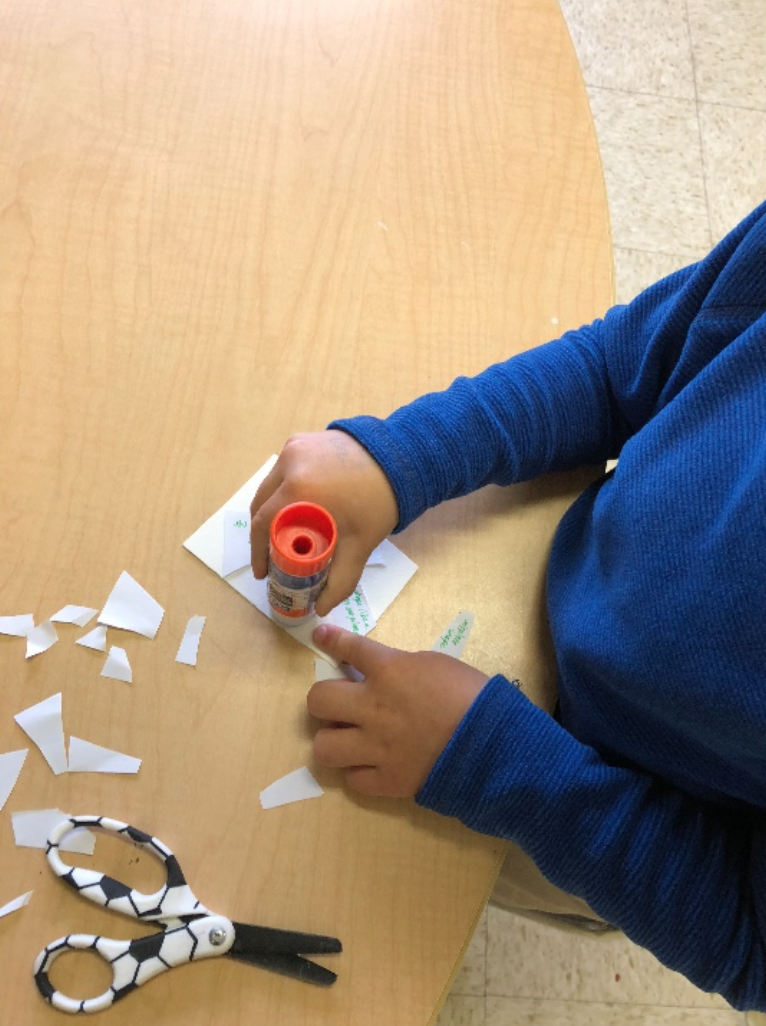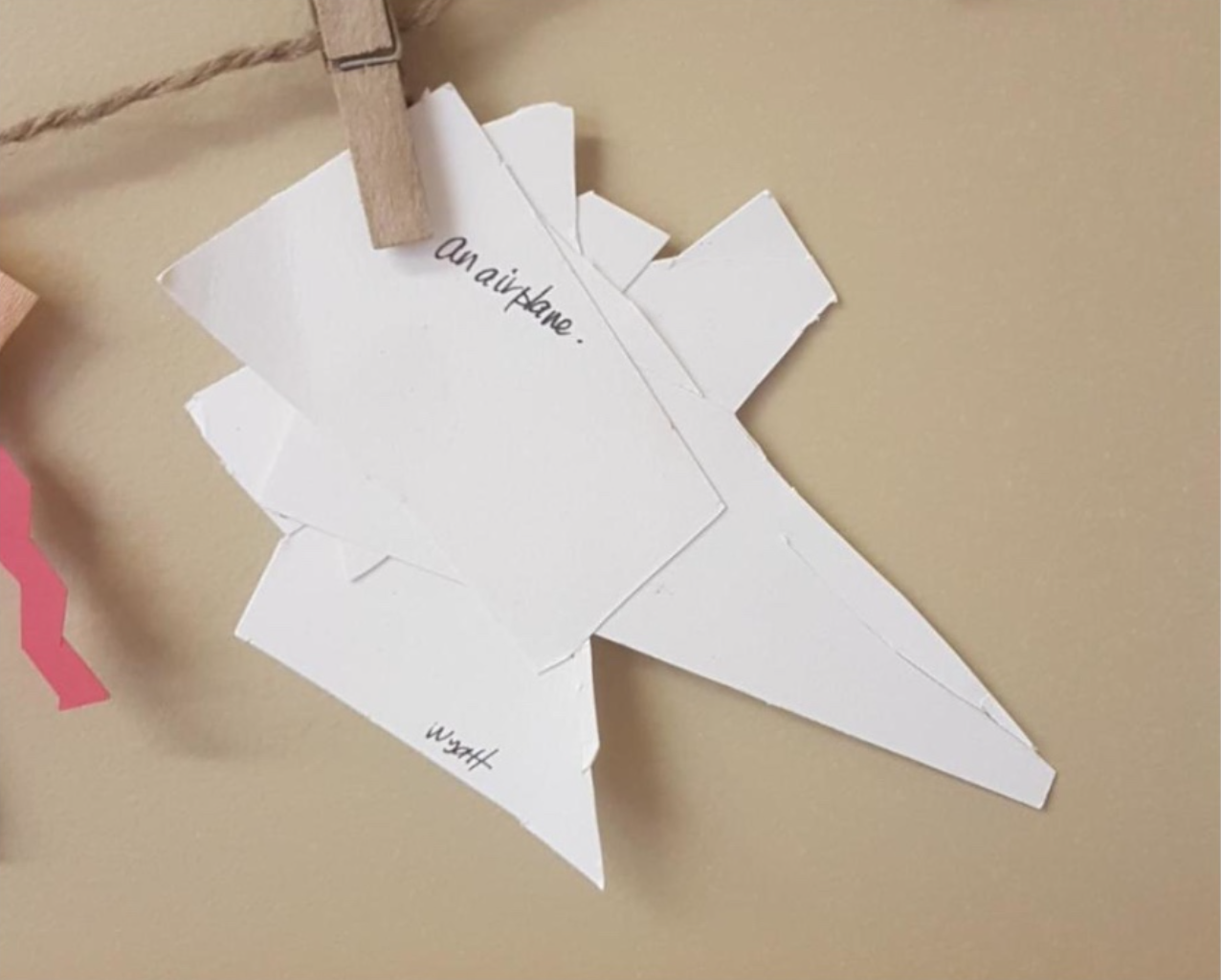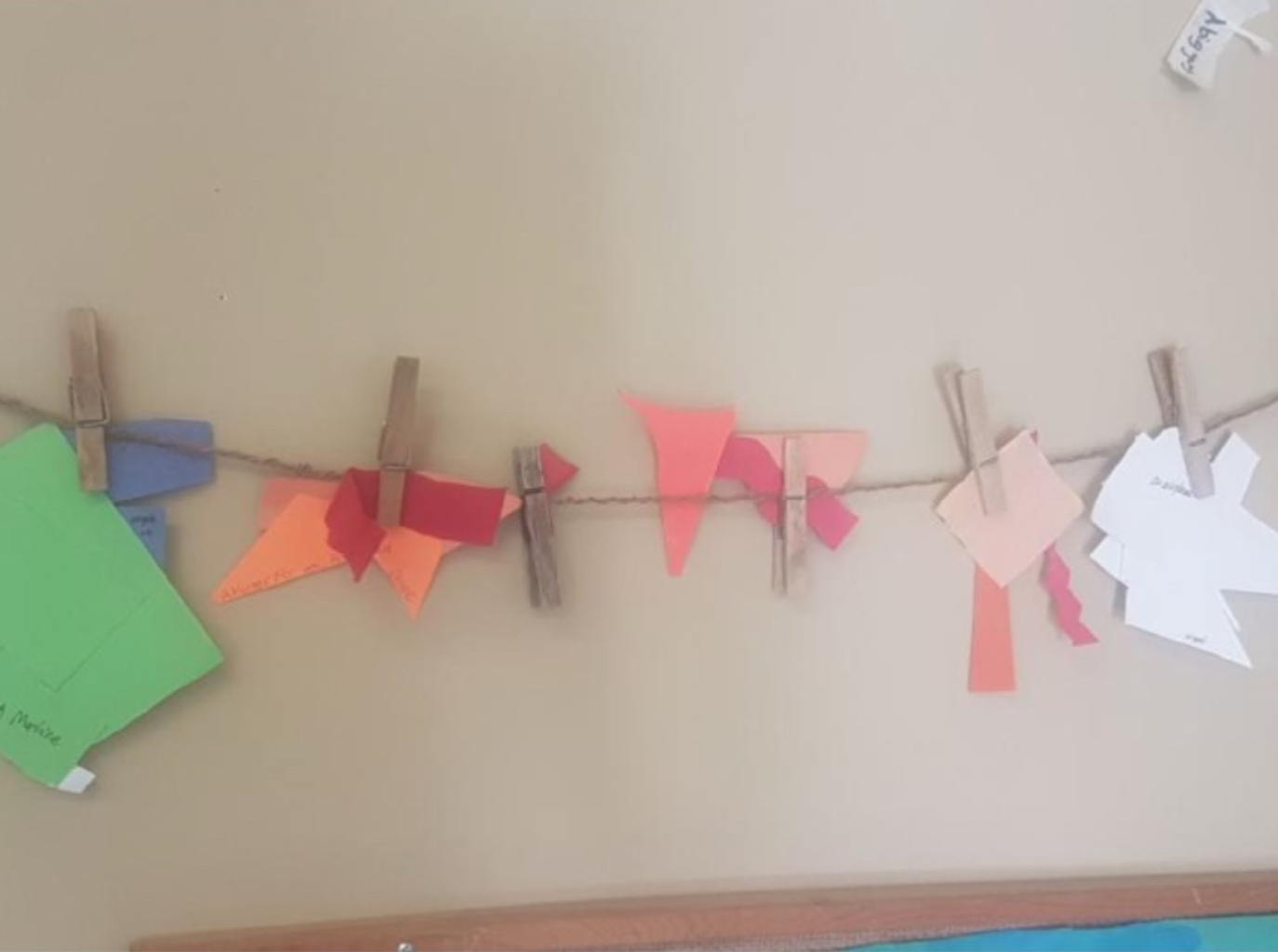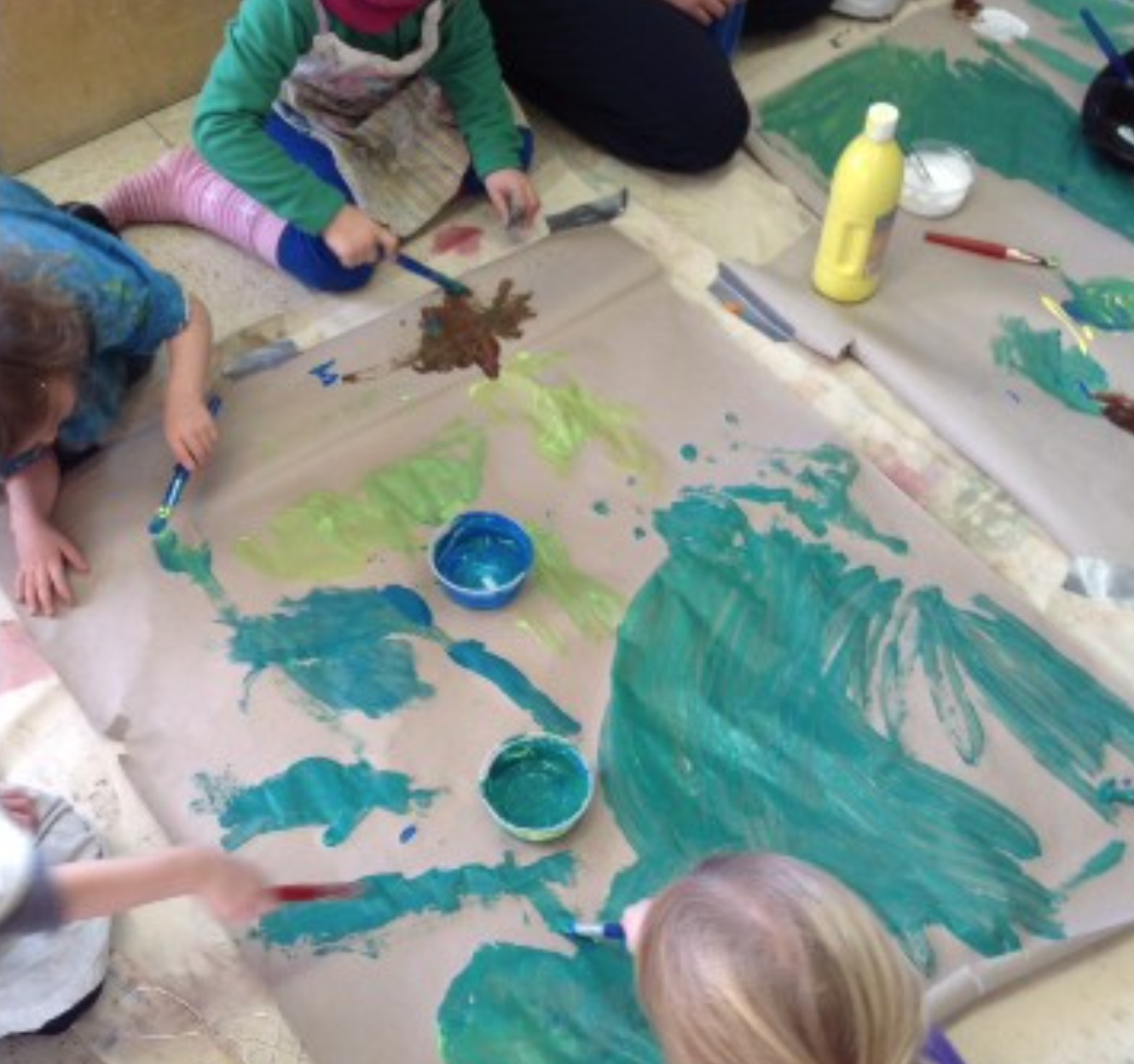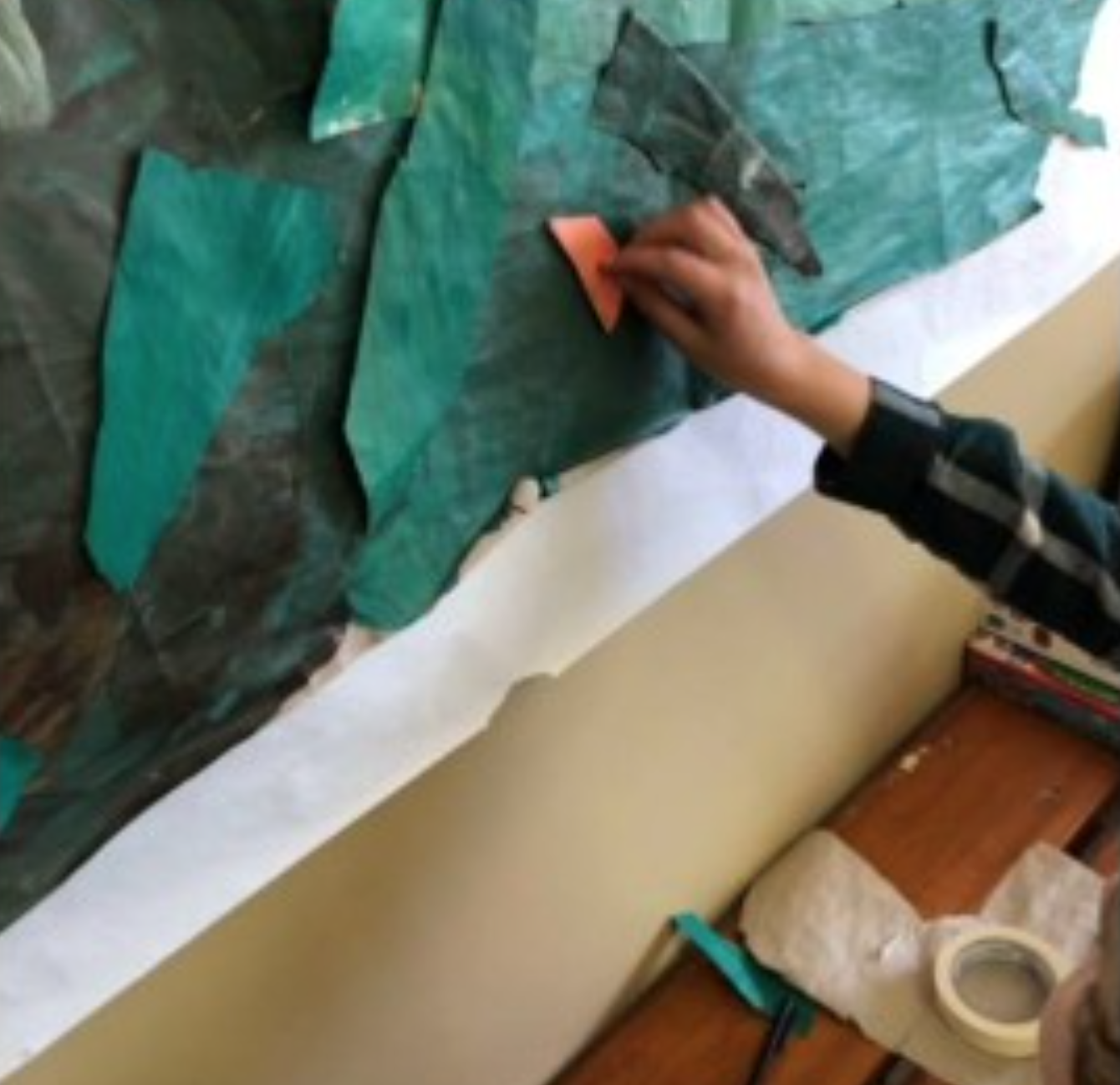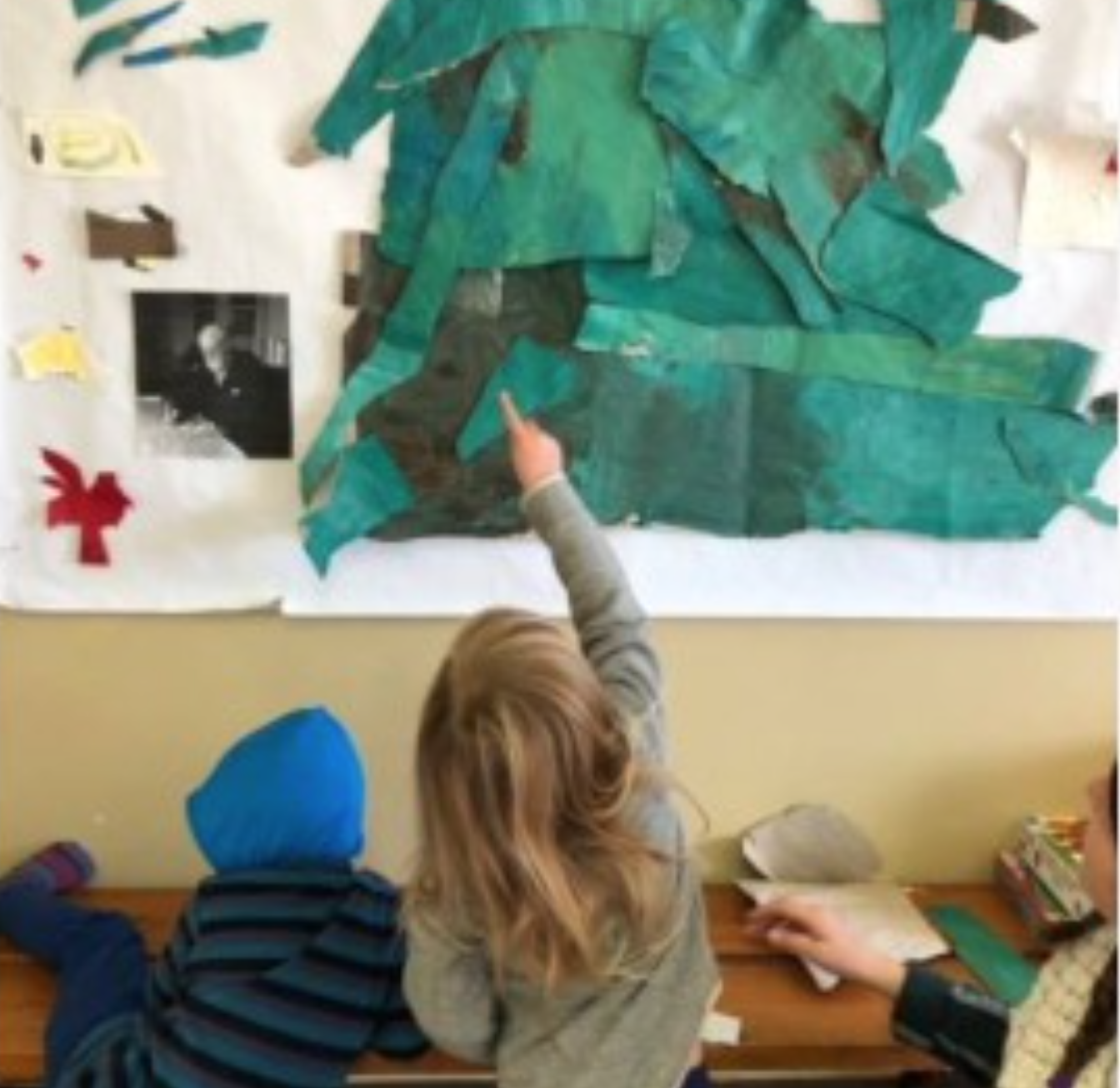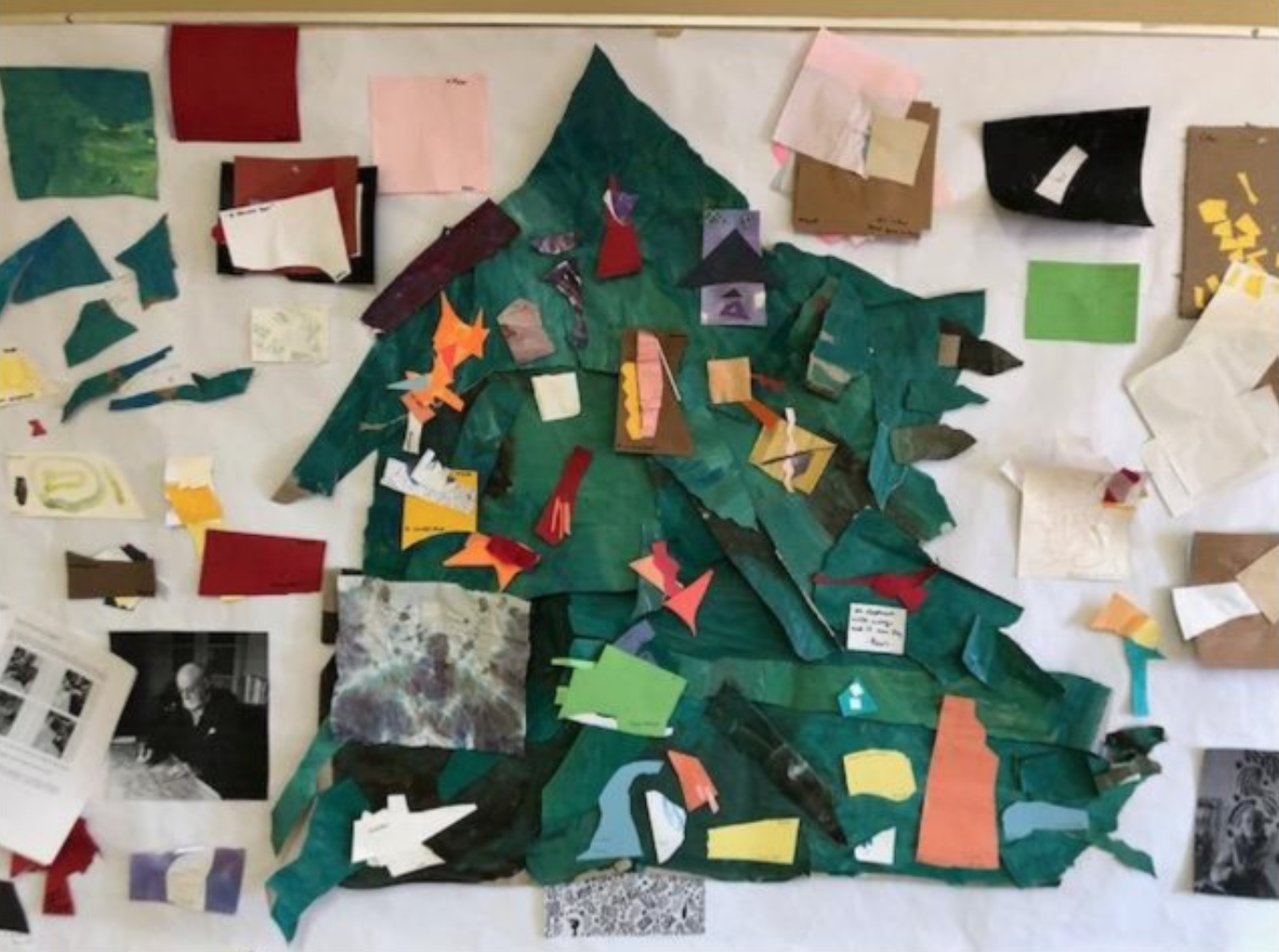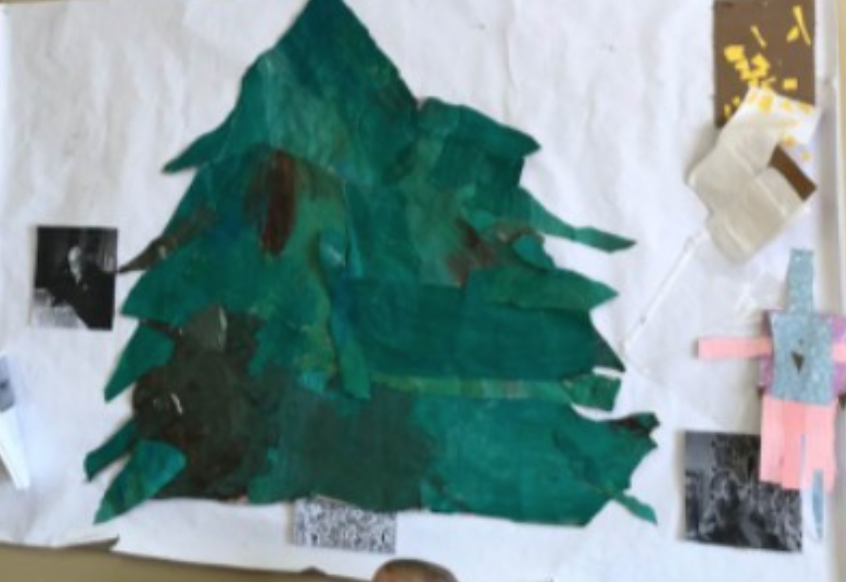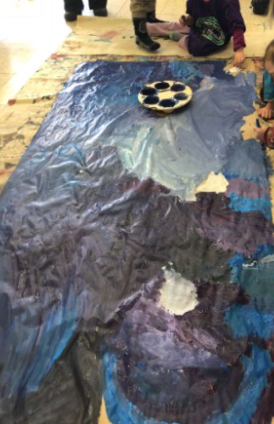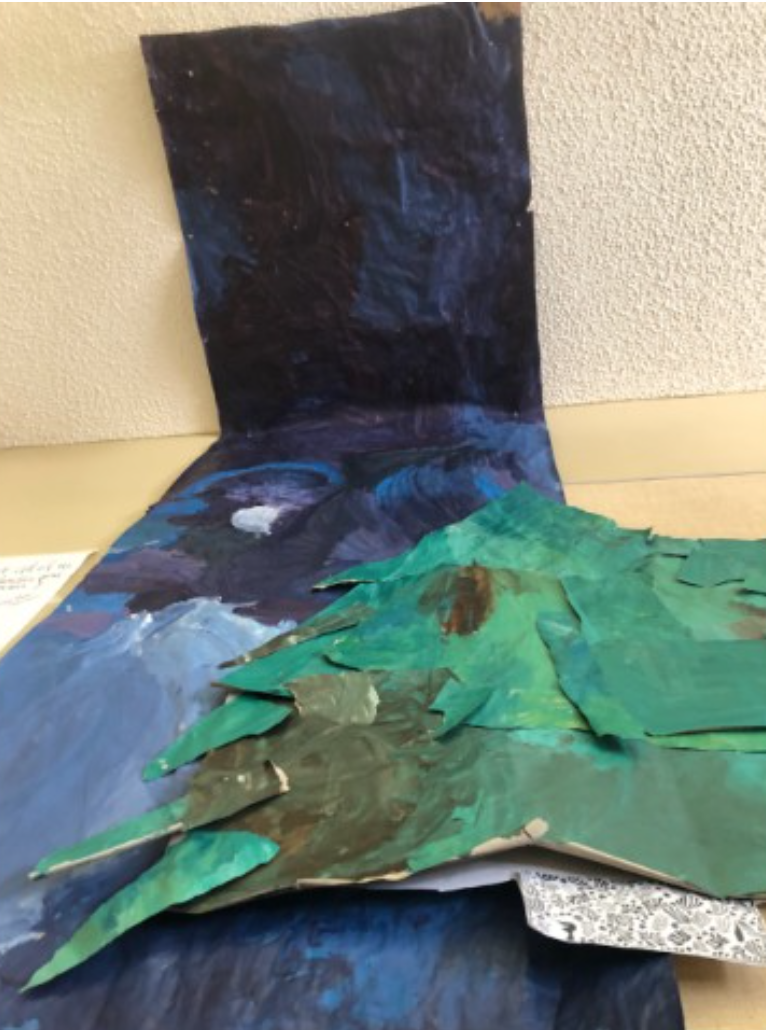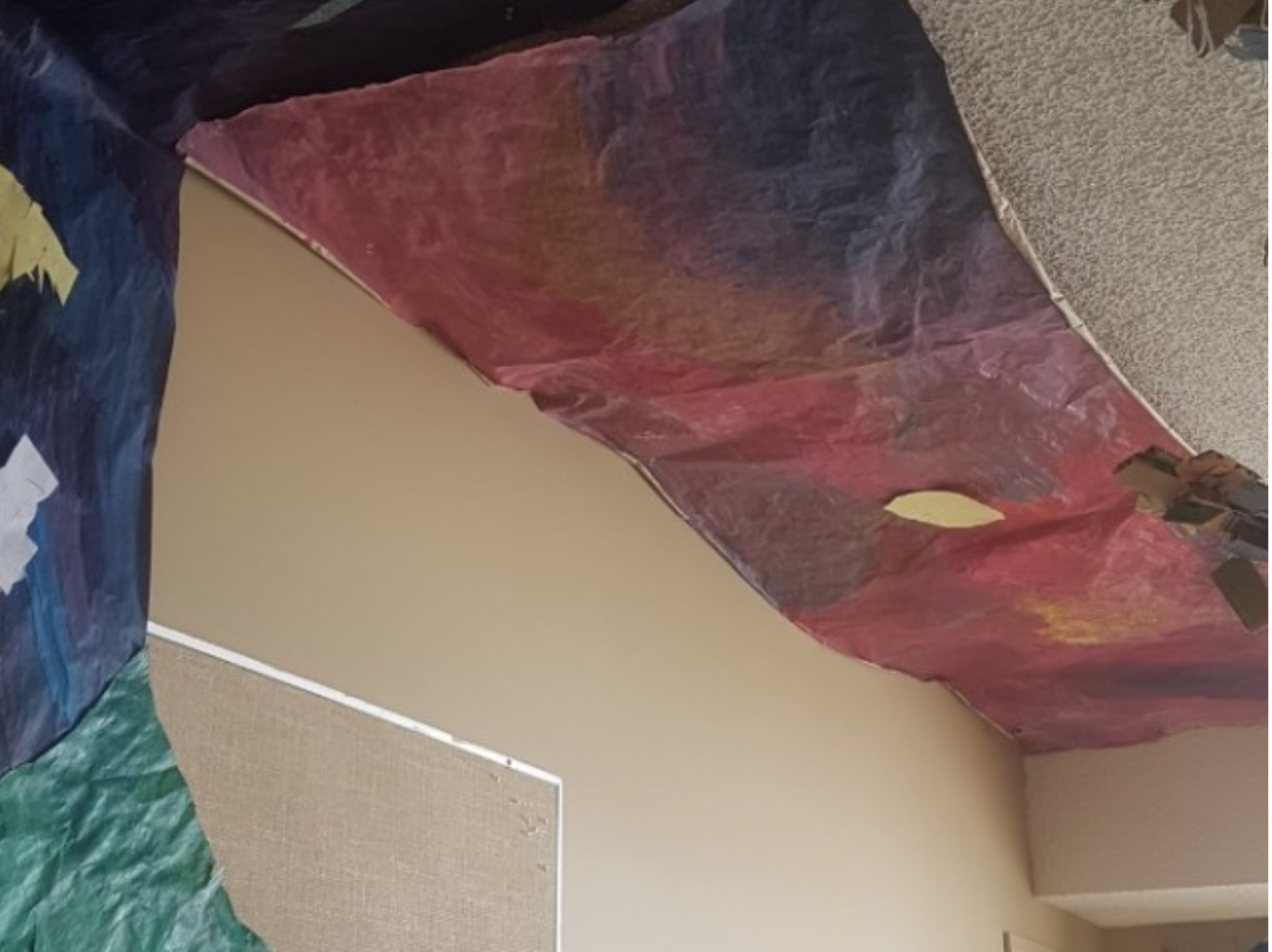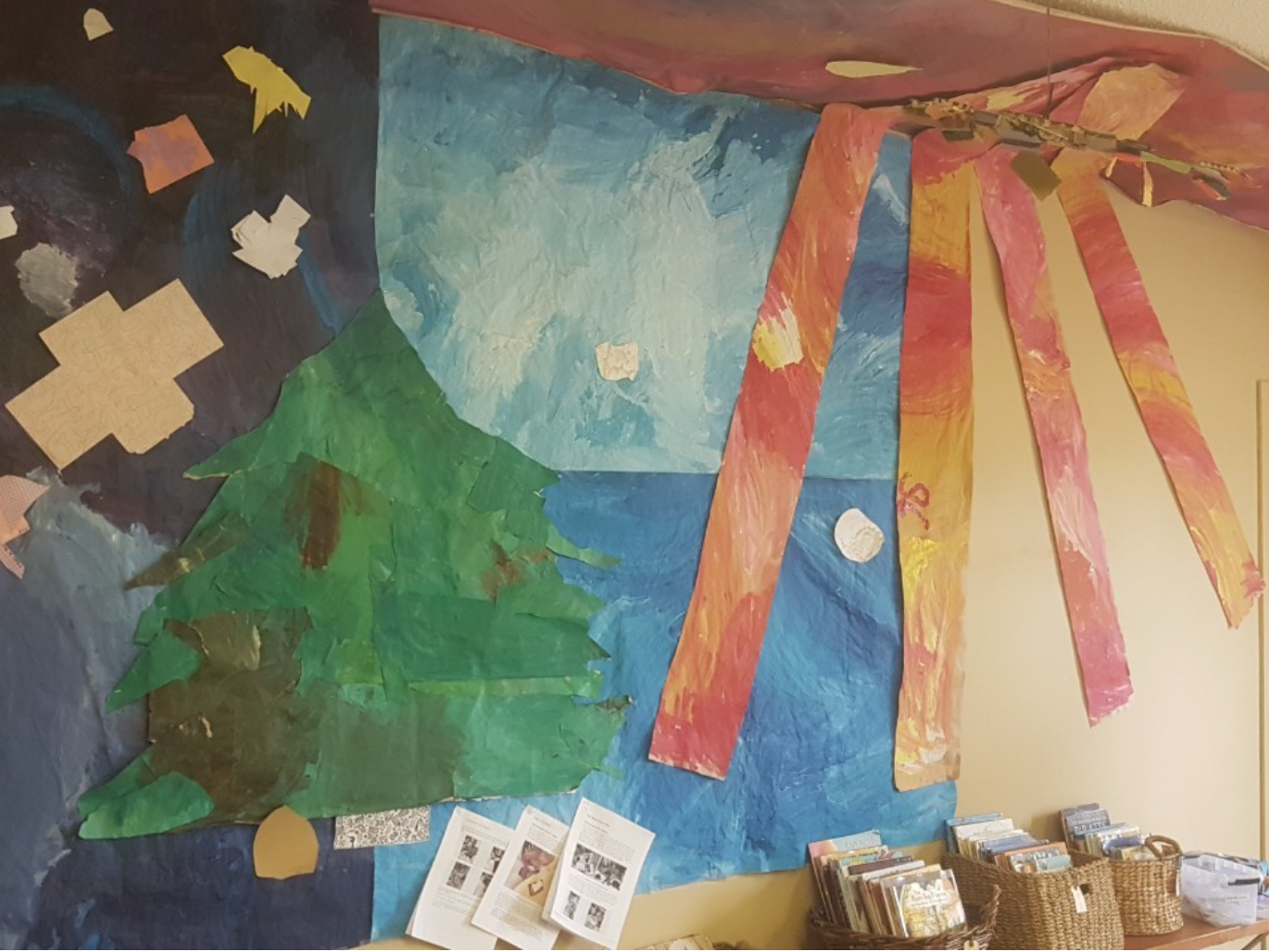Drawing with Scissors - Children’s Process Art - Project Work
This is the first in a series of blogs that document some of the Project Work that has taken place in the Common Digs Forest Schools coming out of the interests of the children. One of the significant differences in our work, from other Forest School/Outdoor Programs and other preschool curriculum or childcare programs is that it is truly founded in an emergent curriculum that looks to the interests and questions of the children to develop playful inquiries and long-term projects. This is responsive in nature and relies on skilled educators to identify deeper questions or topics that the children are working through to make meaning of their world. It is firmly rooted in the trust that children are curious and capable of driving their own learning at every age and that educator’s role is in curating environments - where children feel emotionally safe and encouraged; where spaces are cared for; where beauty and creativity are fostered; and where and ideas and questions are thoughtfully considered and provocations offered to research, deepen knowledge and extend thinking into longer term projects. These stories are adapted and combined from several stories previously written, documenting the projects as they unfolded, using the StoryPark platform.
“Look at all my shapes”
The beginning of a 6-month project that began with one “shape” and further inspired by Henri Matisse’s work: The Cut-Outs.
Educator Team: Felicia Ollenberger, Taylor Innes, Lisa Menzies
The second week of Forest School, we noticed a few children come to the big table and begin cutting paper, like they had on the first day when we had set prepared a cardboard block open-ended art invitation.
I sat down beside one of the children as he cut. He said to me "Look at all my shapes. Look at all the shapes I am making."
I responded, "Yes, I see all of your shapes. I see a triangle, what do you see?" "I see an airplane", he replied.
I was so enlightened by this response. It reminded me of childhood experiences when we look at clouds and guess what they look like. I hadn't thought of them as "shapes" before.
He proceeded to talk about all of the different kinds of airplanes and airplane parts he saw in the shapes. We documented each shape and he glued them onto a new paper.
This creative process brought to my mind the work of artist Henri Matisse and his work with "Cut Outs".
The Educator Team discussed introducing the work of Matisse to the children as a way to extend their thinking and to convey further value to their creative process. We were quite amazed that this very similar process was used by one of the most famous artists in the world.
We were excited at the thought that this work might take on a project approach but were also cautious not to let the project work take over the pure joy of the process and ensure that the creative process and what it brings to the children (a sense of authority in classroom routine, a different way to represent their ideas, ownership over their personal care as this process is also very regulating and calming) remained the priority.
~ Lisa
We decided we would introduce Matisse to the children and found many children’s books about Matisse and his work. When we read the stories the children were instantly curious about him and when we talked about their similarities with creating paper art they became excited and wanted to create more.
As we read the story the children seemed intrigued and had many questions such as "Is Matisse real?" and "Is he dead or alive?". With the children's questions we continued to read more stories about him throughout the weeks. We brought in pictures of him and his art for the children to see. In one particular story we saw Matisse use his paper cut outs to decorate his walls and add colour to his life and eventually create "Matisse’s Garden". Inspired, they decided they would do the same and started by putting their cut-out creations on the wall for everyone to see. Each morning we continued to put out different kinds of papers, glue and scissors and watched as each child created something to add. We began to paint our own paper to later cut out and make something with.
As the children continued to explore the works of Henry Matisse and adding to their art wall, the Educator Team was aware that they were making individual art but wondered if there was a way we could work together to create something for the class. The children had talked about covering the walls and making bigger pieces so we thought about making something large like Matisse had made in his books. As Christmas was only a few weeks away and on our minds, one of the children suggested an idea - making a Christmas tree out of paper and then making paper ornaments.
From a distance the tree might look like any you find in a classroom for preschool-aged children. But up close, and knowing the story it begins to unveil the thoughtfulness and intelligence of very young children as we recognized this as a beautiful, intelligent and creative process. For us, it was a wonderful example of educators and children as co-collaborators of curriculum in a learner-led environment. We were excited to see what would unfold next.
~ Felicia
After the holidays the children decided we needed to take the ornaments down. The tree remained, with a few of the “shapes” that they had created earlier in the year. The Educator Team had talked about their hopes of how this project might continue and how an opportunity might exist to use this art platform to connect children to the Forest School landscape, as this, connecting children to nature, is always one of the key lenses we use when considering our observation of the children’s play and work.
We decided to poke at this idea by asking the children how they thought the tree felt.
“The tree feels lonely” commented one of the children.
The other children agreed.
“The tree needs more trees to be happy.”
”Also lots of birds and foxes.”
“Mice for the tree and they run all around it.”
“Our tree needs apples; Yellow, red, green and orange apples.”
“Adding an apple tree will make the tree feel less sad”
“The tree needs grass and more leaves.”
“A little tree, it could be the tree baby. He could have someone to play with”
“We can make all these trees to go by our tree. I want them all colours!” “We should add a star. The star will make the tree happy because they will be together”
And over time, all of these ideas, one by one, were incorporated into a new creation, expanding over the walls and ceiling of the classroom.
Taylor brought in roles of large paper which they painted large cut outs of paper to make dark blue night skies. But it still needed a “sunny sun sky” with blue and white and yellow sun and sunbeams. Much debate took place on the placement of the skies, the sunset and sun beams.
The children have re-instilled to me the importance of the process rather than the final product. There have been many times where we were surprised by the children’s ideas or even struggled to understand them. However, following their lead and honouring their vision of this project was an amazing journey. The children worked together to collaborate their ideas, which sometimes wasn't easy and they had to learn how to compromise. They problem solved and used critical thinking when things didn't fit or looked right and strengthened motor skills when we painted and cut to make our creations. The children’s ability to think creatively and their inventiveness has been the most evident through this process as everything has come directly from them and their ideas.
~ Felicia
The project began in early October. Reciprocal relationships between the children, the Forest School landscape, the creations they made and the ones they saw outside to the materials, to storytelling and to Matisse. The children worked on it over the course of the year, adding more cut out, moving them around, removing them, until the spring when one child remarked "It's starting to look like a museum in here". When we asked him why he thought that he responded "Because there is a lot of art". So, we then had a celebration with families, to invite them to the museum where the children read the Matisse books to their families and shared about the project and their individual and share contributions.
And in the end the tree did feel happy. And so did we.
~ Lisa


